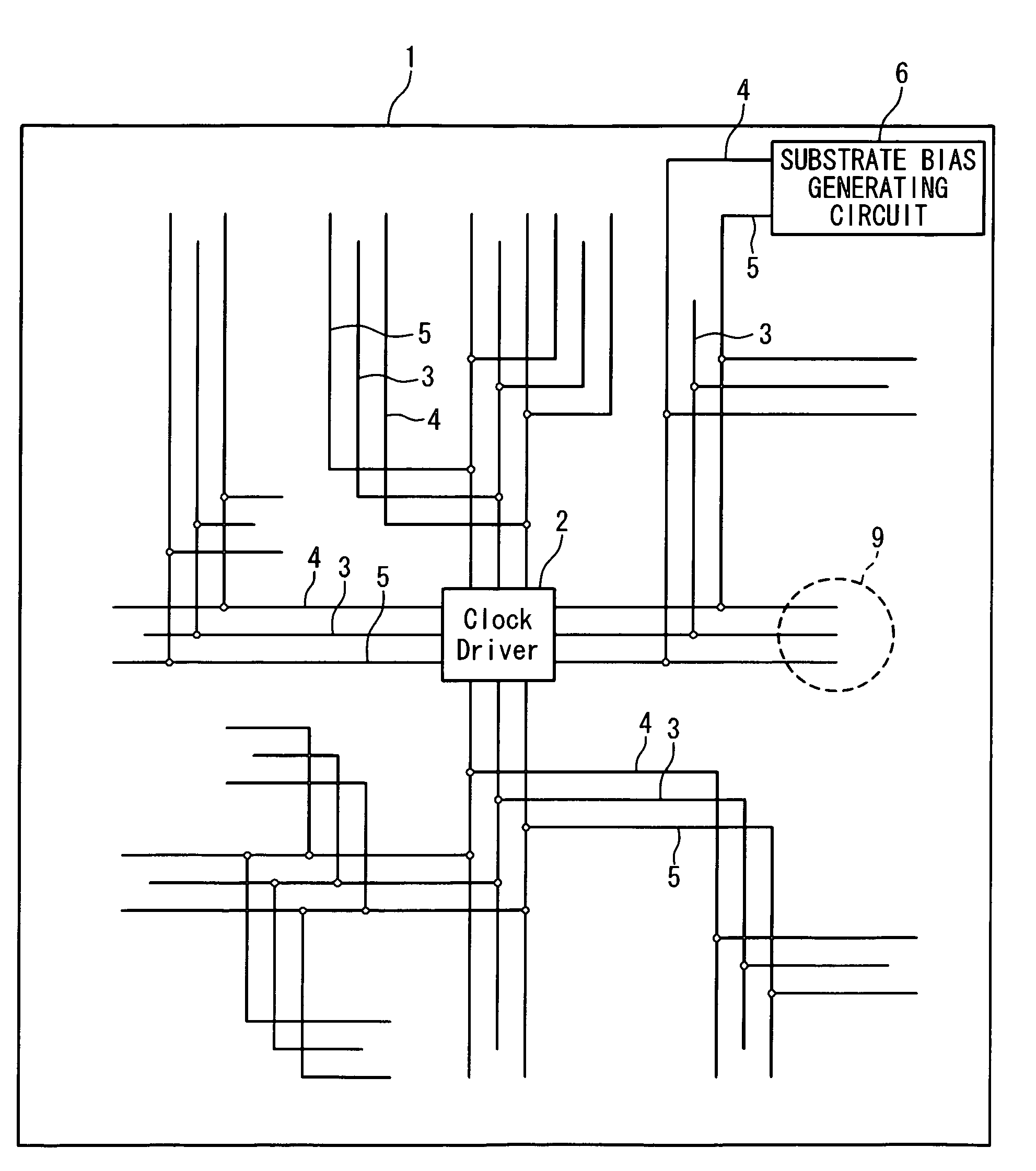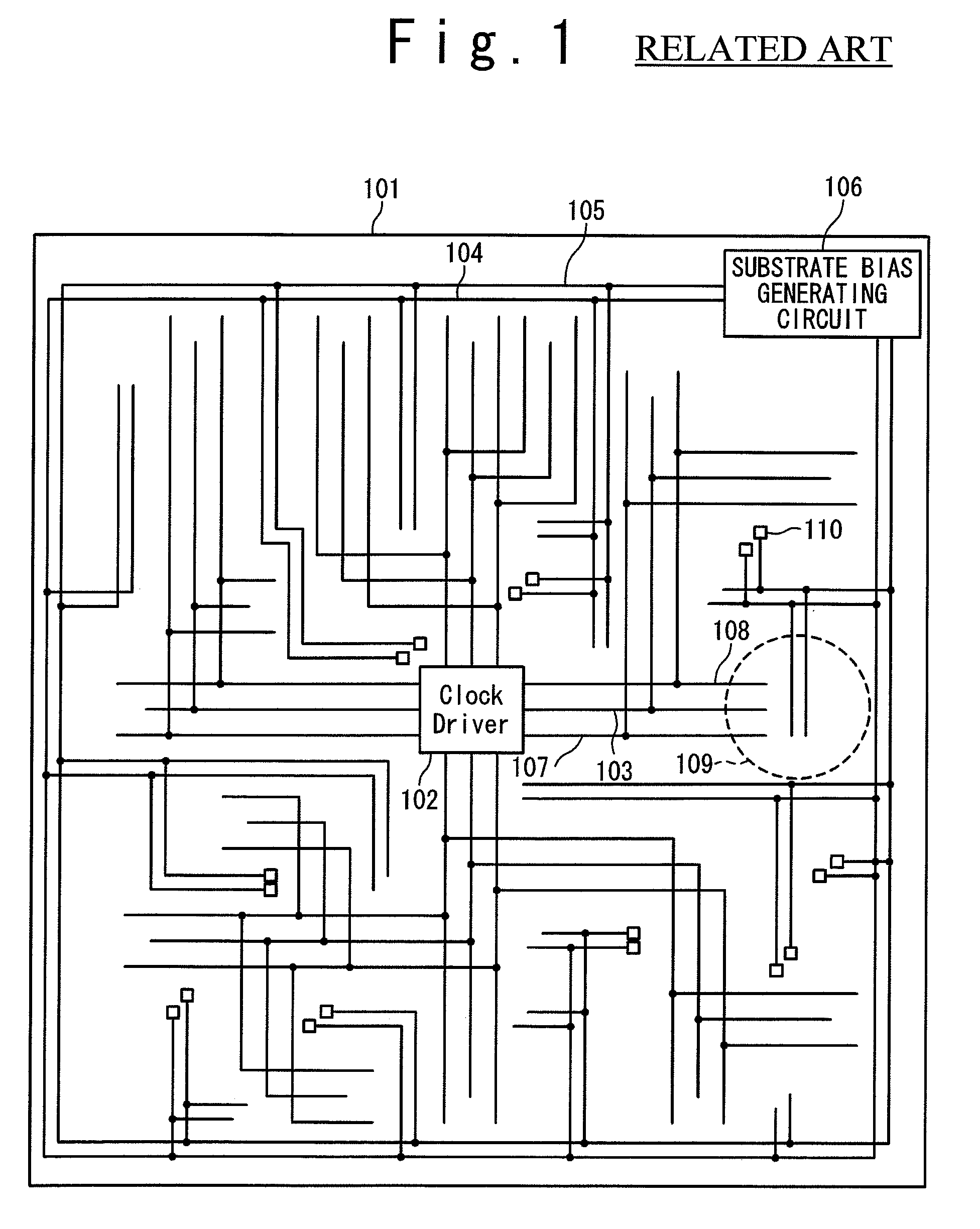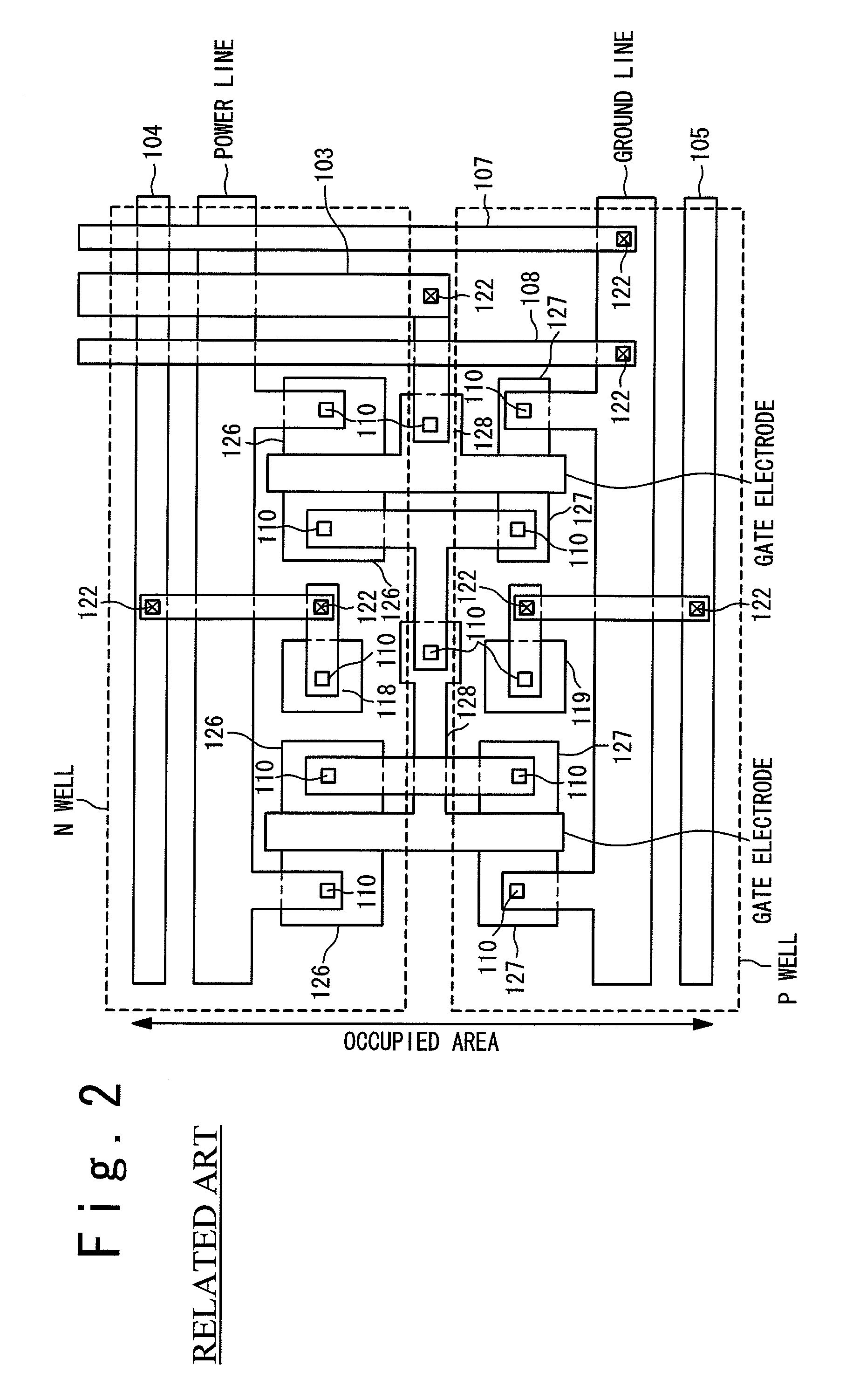Semiconductor device
a semiconductor device and semiconductor technology, applied in the field of semiconductor devices, can solve the problems of increasing the electric power consumption of the semiconductor device, increasing the electric power consumption, and the influence of crosstalk and skew caused by coupling capacitance between adjacent signal nets, and achieve the effect of advancing the hyperfine structure of the semiconductor device and suppressing the response delay
- Summary
- Abstract
- Description
- Claims
- Application Information
AI Technical Summary
Benefits of technology
Problems solved by technology
Method used
Image
Examples
first embodiment
[0035]The embodiment of the semiconductor device of the present invention will be described below with reference to the drawings. In the following embodiments, it is supposed that the semiconductor device is the device which is constituted by one chip and has a normal mode in which normal operations are carried out and a standby mode in which operations except the minimum necessary operations are stopped for saving the electric power consumption.
[0036]FIG. 3 shows a plan view of the semiconductor device 1 in this embodiment. With reference to FIG. 3, the semiconductor device 1 in the first embodiment contains a clock driver 2 and a clock line 3 for sending a clock signal outputted by the clock driver 2. Also, the semiconductor device 1 contains: an N-well side substrate bias supplying node 4 and a P-well side substrate bias supplying node 5 that are arranged along and in parallel with the clock line 3. As shown in FIG. 3, the N-well side substrate bias supplying node 4 and the P-wel...
second embodiment
[0054]The second embodiment of the present invention will be described below with reference to the drawings. In the following explanation, the members to which the same symbols as the symbols used in the explanation of the first embodiment are assigned have the similar configurations and operations. Thus, they are not explained in detail.
[0055]FIG. 7 is a plan view of the semiconductor device 1 according to the second embodiment of the present invention. With reference to FIG. 7, the substrate bias generating circuit 6 installed in the semiconductor device 1 of the second embodiment supplies the substrate bias to a particular region (for example, a substrate bias application region 10 shown in FIG. 7). There are semiconductor devices having a mixture of the region in which the threshold voltage is controlled through the substrate bias and the region in which such control is not required. In the second embodiment, when the semiconductor device 1 is the semiconductor device having suc...
third embodiment
[0057]The third embodiment of the present invention will be described below with reference to the drawings. In the explanation of this embodiment, the members to which the same symbols as the symbols used in the explanations of the other embodiments are assigned have the similar configurations and operations. Thus, they are not explained in detail.
[0058]FIG. 8 is a plan view of the semiconductor device 1 according to the third embodiment of the present invention. With reference to FIG. 8, the semiconductor device 1 in the third embodiment is provided with a plurality of substrate bias generating circuits 6. Although only two substrate bias generating circuits 6 are drawn in FIG. 8, the number of the substrate bias generating circuits can be set more than three. Under the condition that the signal delay is induced correspondingly to the advancement of the hyperfine structure of the semiconductor device, there is a case that the difference in the response speed is generated between th...
PUM
 Login to View More
Login to View More Abstract
Description
Claims
Application Information
 Login to View More
Login to View More - R&D
- Intellectual Property
- Life Sciences
- Materials
- Tech Scout
- Unparalleled Data Quality
- Higher Quality Content
- 60% Fewer Hallucinations
Browse by: Latest US Patents, China's latest patents, Technical Efficacy Thesaurus, Application Domain, Technology Topic, Popular Technical Reports.
© 2025 PatSnap. All rights reserved.Legal|Privacy policy|Modern Slavery Act Transparency Statement|Sitemap|About US| Contact US: help@patsnap.com



